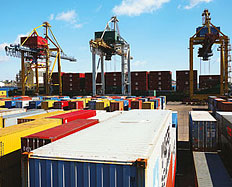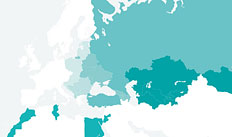Chapter 2
Transition region in the shadows of the eurozone crisis
The past year has seen a significant deterioration in the external economic environment for the transition region. The Transition Report 2011 suggested an ongoing recovery from the global financial crisis, but pointed out the risks stemming from the region’s exposure to the eurozone. Since then, as the eurozone’s sovereign debt crisis has deteriorated, recovery has stalled in many transition countries which are particularly integrated with the single currency area. Growth has slowed as exports and capital inflows have declined. Crucially, banks, especially those in the western part of the transition region, have lost significant external funding as eurozone financial institutions have deleveraged and reduced cross-border financing of their subsidiaries in transition countries. This has depressed credit growth, in turn impacting on output expansion.
This chapter summarises the main macroeconomic and financial developments in the transition region over the past year. Since during that time the region’s exposure to the eurozone has veered from a benefit to a disadvantage, it assesses the extent to which each transition country’s growth depends on the fortunes of the single currency area as well as on other external factors, such as oil prices and the rate of growth in Russia. The results confirm the expectation that, in general, the countries of central Europe and the Baltic states (CEB) and south-eastern Europe (SEE) are more intertwined with the eurozone, while those of Central Asia (CA) and eastern Europe and the Caucasus (EEC) have closer links with Russia. However, the analysis also reaches some more surprising conclusions. For instance, within the transition region, Ukraine is particularly exposed to developments in its external environment, while Poland appears to be unusually resilient to them.
The outlook for the transition region remains dependent on the course of the eurozone crisis and its global repercussions, including its impact on commodity prices and global risk aversion. The transition countries will experience a substantial economic slow-down in 2012 and 2013 relative to 2011 as a result of the crisis. The CEB and SEE regions will see particularly slow growth and some of their countries have entered or will re-enter mild recession. As countries further east become more exposed to the impact of the crisis, their economies are also likely to flag. Possible further deterioration of the euro area turmoil poses the largest risks to already-slower projected 2012 and 2013 growth in the region.







